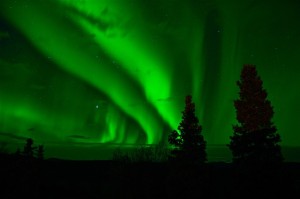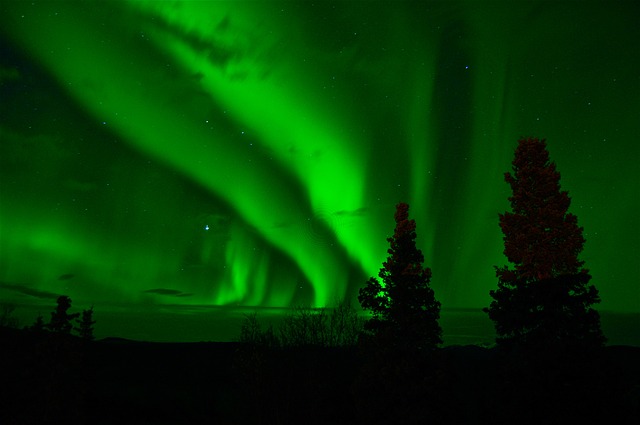The aurora borealis will be the subject of a new study. NASA, the Canadian Space Agency and scientists from the University of Calgary and Berkeley are all collaborating.
The aurorae are magnetic fields influenced by the sun, and can be observed at dawn virtually identically on the two poles.
Thirteen cameras will be installed in the course of the summer a little everywhere in Canada, the TNO,Quebec, the Yukon Nunavut,as well as 4 in Alaska. “The aim of this study is to find out why they appear at a specific time rather than another. What causes their intensity is also the subject of this research. This will help them to better understand the relationship between the sun and the earth “, explains James Pugsley, president of Astronomy North. In 2006, NASA plans to send into orbit 5 satellites in order to receive pictures of the phenomenon.
 This project of $180 million is one of the most advanced in the history of special exploration, to work well these devices need to be placed in dark places and far from the urban areas, one of them will be at the site of the Ekati mine.
This project of $180 million is one of the most advanced in the history of special exploration, to work well these devices need to be placed in dark places and far from the urban areas, one of them will be at the site of the Ekati mine.
“We need the cooperation of Canadians, says Eric Donovan,doctor of physics and astronomy at the University of Calgary. We need guards for each aircraft, which are ready to collect the data “.
The aurorae can cause the erosion of pipelines. “If we could predict their occurrence, it will be possible to prevent this problem. “Added James Pugsley
They are also surrounded by urban legends. Rumor has it that the military is worried by the interference caused by the magnetism of the aurorae, whereas it is very minimal.
Astronomy North plans to acquire this fall a photographic camera to obtain color pictures of this phenomenon. They will then be visible on the site of the University of Calgary.
First published in 2004

